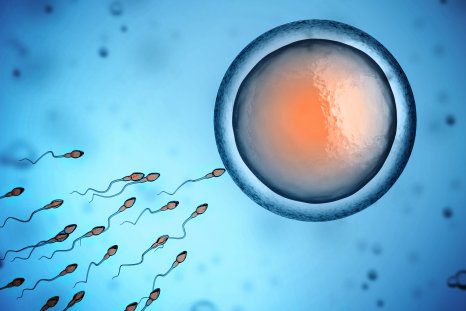There's a startling connection between the collapse of bat populations and a rise in infant mortality, a study published in the journal Science has revealed.
The research shows that when insect-eating bat populations in North America were decimated by disease, farmers turned to chemical pesticides in greater quantities, leading to over 1,000 additional infant deaths.
"When insect-eating bat populations declined in the United States, farmers responded," Eyal Frank, an assistant professor at the Harris School of Public Policy and the study's author, told Newsweek.
"And they compensate with more insecticides to make up for the loss in biological pest control. However, that results in adverse health consequences because pesticides are toxic compounds by design."
Bats play a crucial role in agriculture, acting as natural pest control by feeding on insects. However, since 2006, bat populations in many North American counties have collapsed due to white-nose syndrome, a disease caused by an invasive fungus that affects bats, especially during hibernation.
The fungus was first detected in New York but has since spread across the U.S., affecting bat populations in Alaska, Arizona, Florida, Hawaii, Nevada, Oregon and Utah, according to the United States Geological Survey (USGS).
The disease has a mortality rate upwards of 70 percent in bats, leading to the decimation of affected populations. "This is essentially a death sentence for bats. Many of the affected populations are completely wiped out," Frank said.
The study compared counties impacted by bat die-offs with those that were unaffected. Frank found that farmers increased their pesticide use by about 31 percent in counties where bats declined.
This surge in pesticide application corresponded with a nearly 8 percent increase in infant mortality, resulting in an estimated 1,334 additional deaths.
Several measures were implemented to ensure the additional deaths could be attributed to the bat die-off. For example, the timings of increased insecticide use and additional deaths matched precisely with the arrival of the white-nose syndrome in affected counties.
Meanwhile, in unaffected counties, no increase in mortality was observed.
The research also controls for other possible causes, such as increased drug-related deaths, economic conditions and changes in crop composition.
Still, it's difficult to prove with absolute certainty that there is a causal link between bat die-offs, pesticide use and infant mortality.
In a Policy Forum document relating to the study, also published in Science, authors Ashley Larsen, Dennis Engist and Frederik Noack describe Frank's work as "important for understanding the benefits of allocating scarce resources for biodiversity conservation."
However, they also note that experiments that directly manipulate the abundance or diversity of species in a specific area—rather than measuring real-world changes—are considered the "gold standard" for understanding the impacts of biodiversity, as their causes can be directly interpreted.
In addition to health impacts, the research found that pesticides were less effective than bats at controlling pests, causing crop quality and farmers' revenues to drop. The analysis showed that crop sales declined by nearly 29 percent, leading to $26.9 billion in losses for farmers in communities that experienced bat die-offs between 2006 and 2017.
When factoring in the health impacts, including $12.4 billion in damages from infant mortality, the total societal cost of the bat die-off amounted to $39.6 billion.
Frank concedes that there is little that can be done to protect bat populations from invasive fungi. "The problem with invasive species, especially fungi species, is that once they're here, they're here to stay," he said.
That's not to say people aren't trying. Strategies are in place to try to limit the spread of the fungus, which was thought to have originally been introduced from Europe. When visiting affected caves, shoes can be disinfected on exit to prevent spores from being carried elsewhere.
"The first key strategy we're dealing with is trying to contain and slow down the spread, and then the key hope is that there's some genetic variation within these bats that will allow them to manifest some resilience to the fungus," Frank said.
"There's room for some very cautious optimism that might have started already."
Another glimmer of hope comes in the form of vaccinations. The USGS National Wildlife Health Center and the Wisconsin Department of Natural Resources are actively working on a vaccination program that, as of 2023, was showing some early signs of promise.
Do you have a tip on a science story that Newsweek should be covering? Do you have a question about fur farms? Let us know via science@newsweek.com.
References
Frank, E. G. (2024). The economic impacts of ecosystem disruptions: Costs from substituting biological pest control. Science, 385(6713). https://doi.org/10.1126/science.adg0344
Larsen, A. E., Engist, D., & Noack, F. (2024) The long shadow of biodiversity loss: Technological substitutes are poor proxies for functioning ecosystems. Science, 385(6713). https://doi.org/10.1126/science.adq2373
Disclaimer: The copyright of this article belongs to the original author. Reposting this article is solely for the purpose of information dissemination and does not constitute any investment advice. If there is any infringement, please contact us immediately. We will make corrections or deletions as necessary. Thank you.



